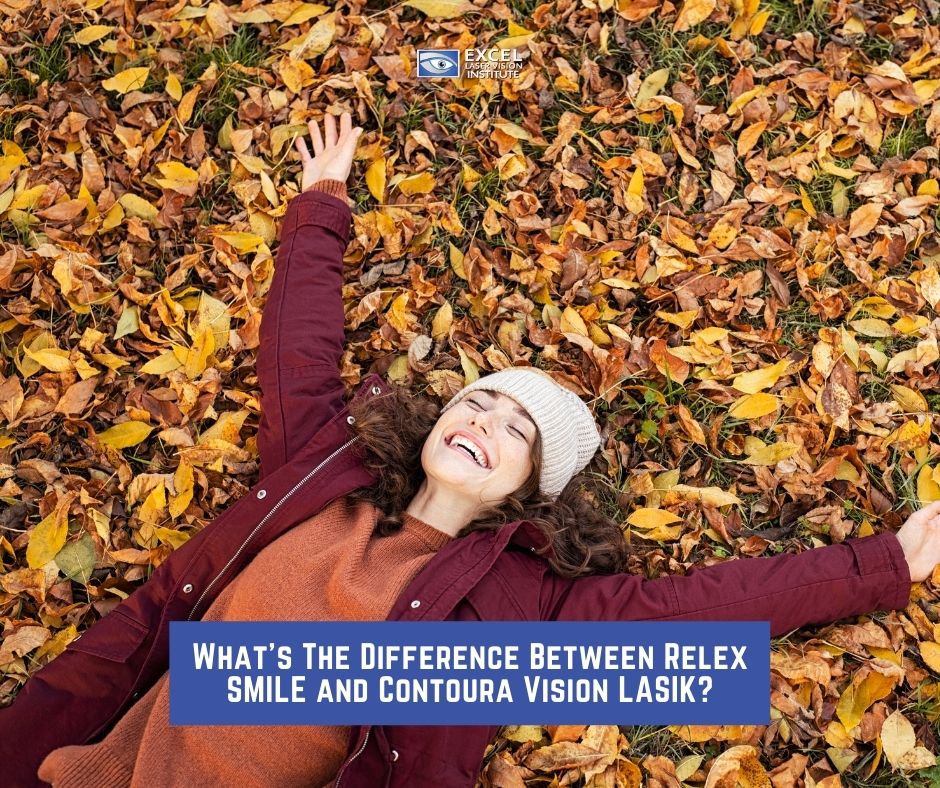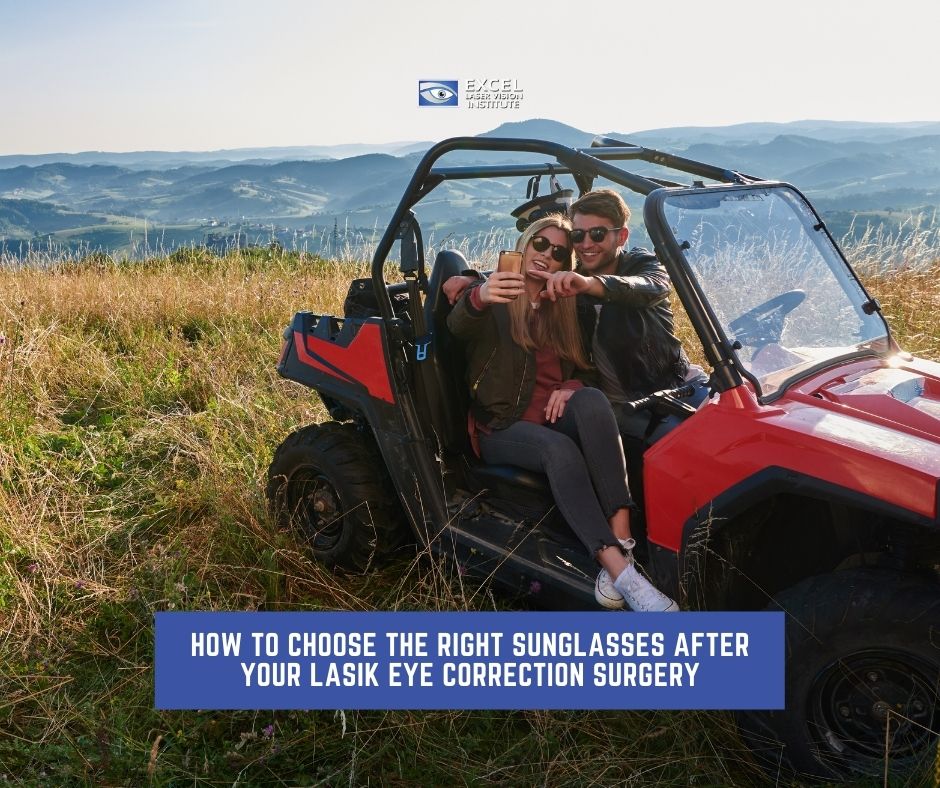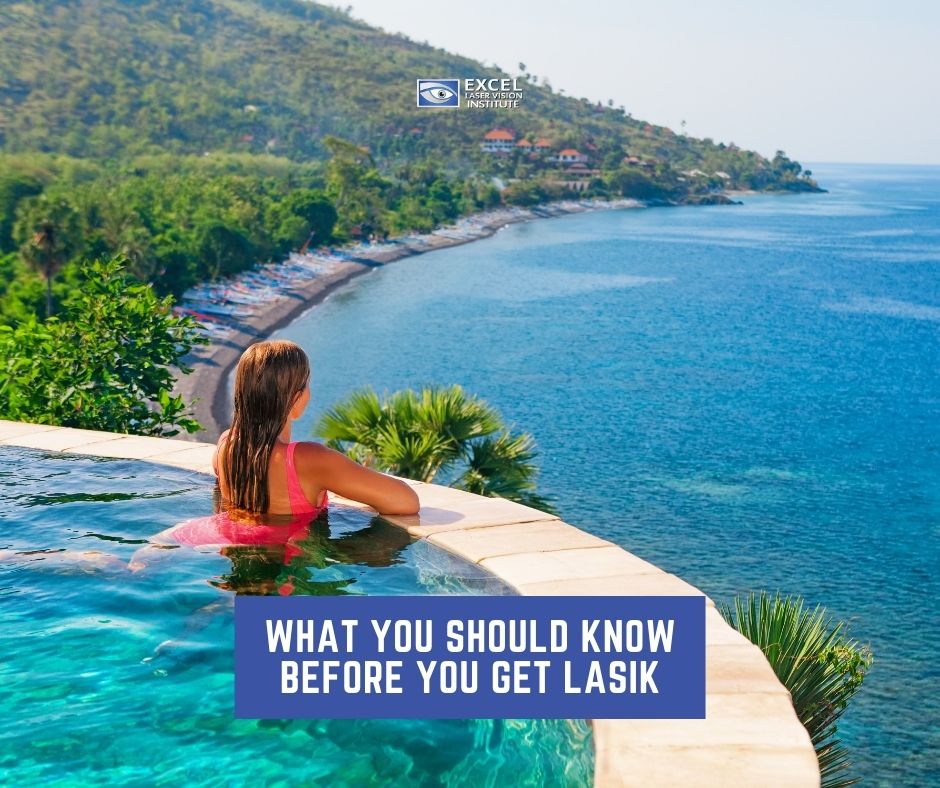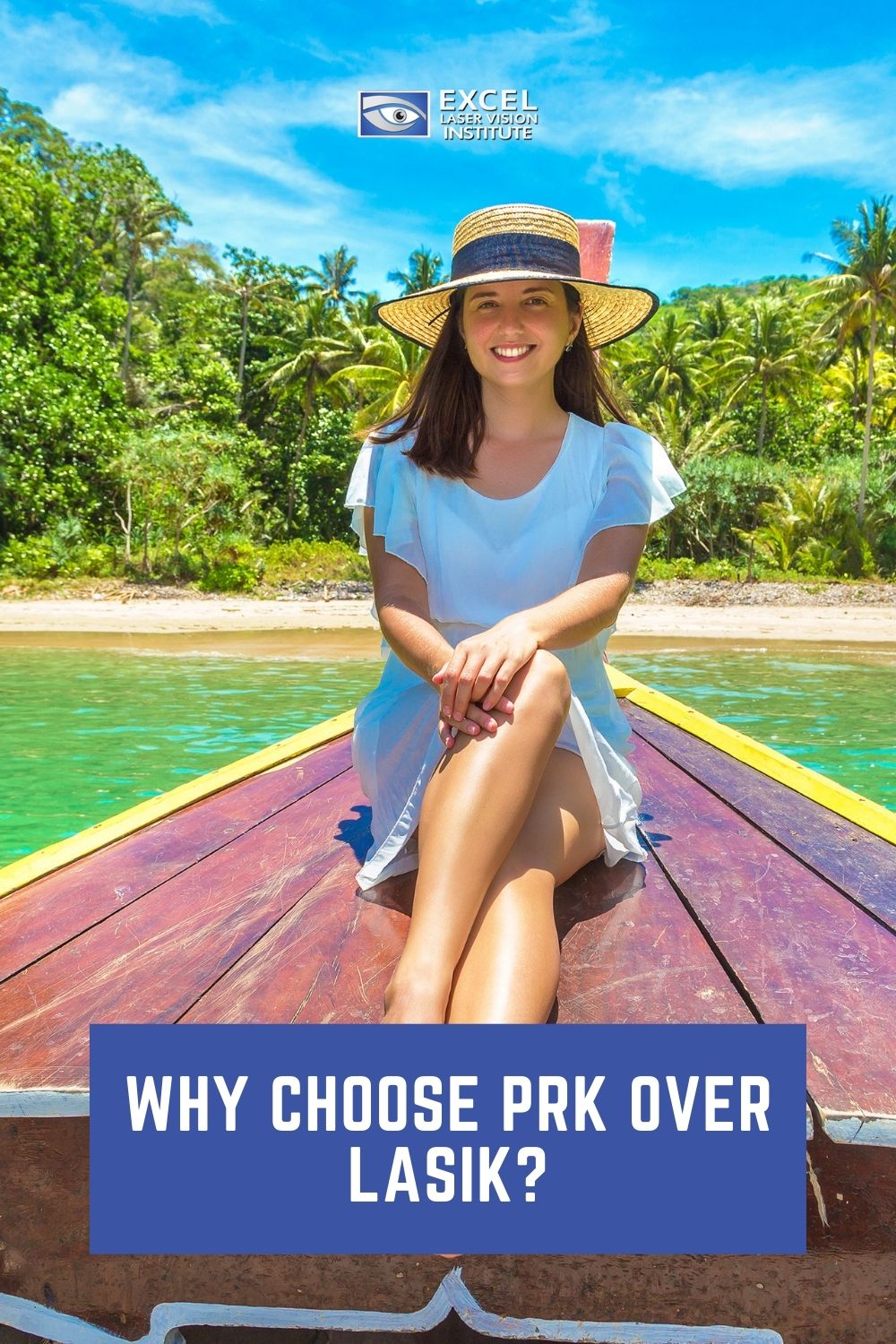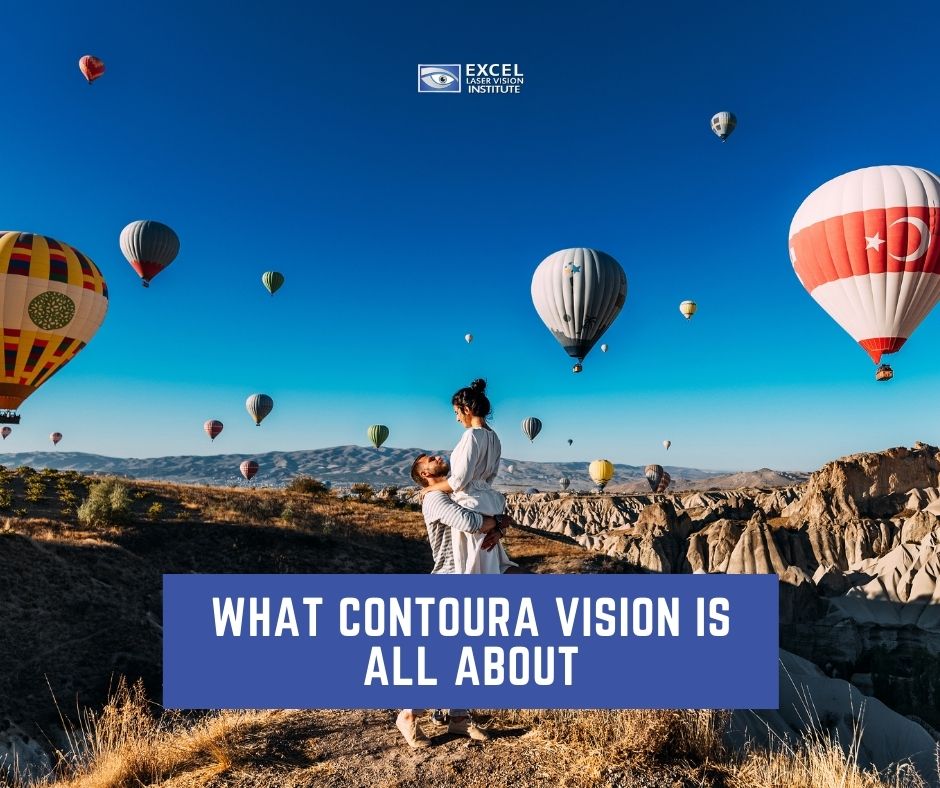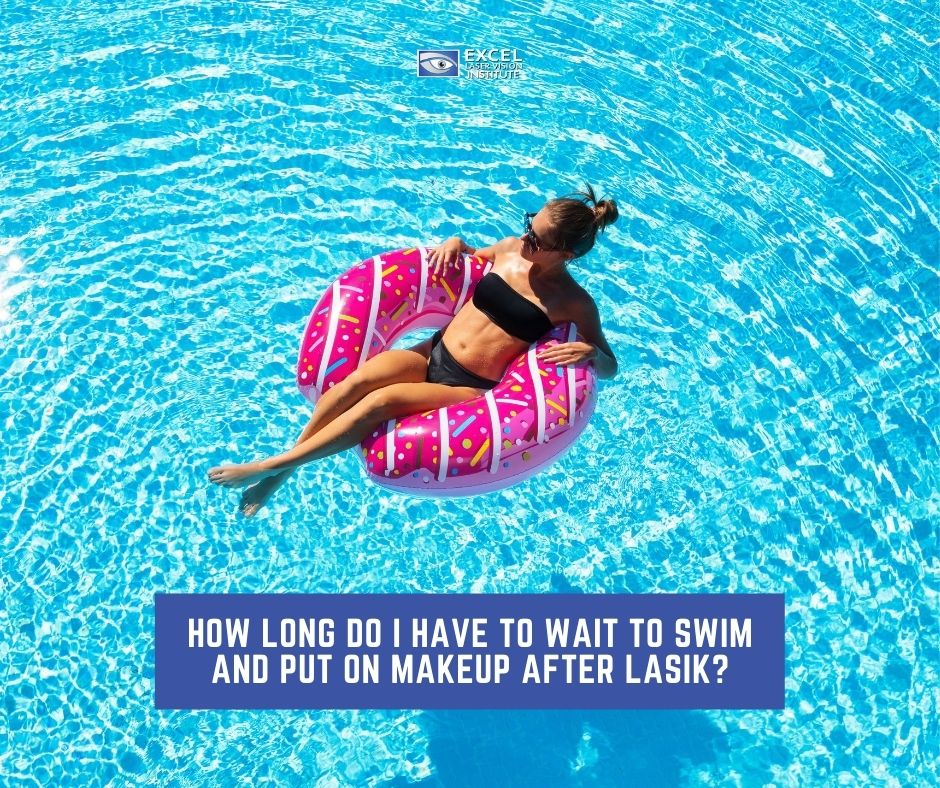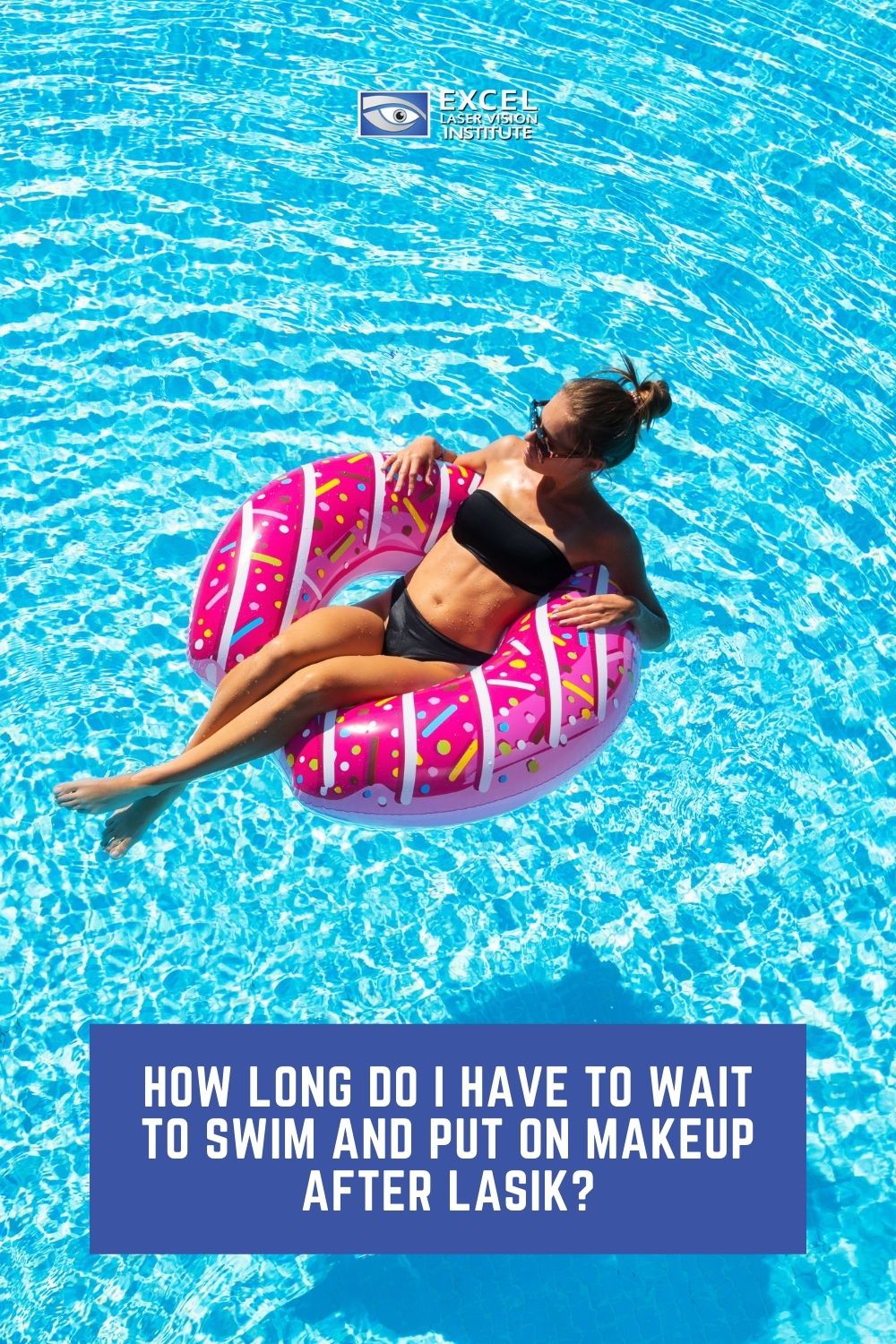
What Causes Dry Eyes for LASIK Patients
Patients who come to get LASIK in Los Angeles complaining of dry eyes are told that their eye condition is a chronic lack of lubrication and moisture on the eye’s surface. The eye needs a sufficient and consistent layer of tears on its surface to maintain eye health, remain comfortable, and help a person to see correctly.
Laser vision correction doctors in Los Angeles told us that tears wash the eye’s surface to keep it moist and clear away dust, debris, and microorganisms that could harm the cornea and cause an eye infection.
A normal tear film includes three crucial components:
An oily (lipid) component created by meibomian glands in the eyelids
A watery (aqueous) component is produced by lacrimal glands found behind the outer visible feature of the upper eyelids.
A mucous-like (mucin) component created by goblet cells in the conjunctiva that covers the white of the eye (sclera).
Each component of the tear film has an important role. For instance, tear lipids help keep the tear film from vaporizing too quickly and boost lubrication. Mucin helps anchor and spread the tears throughout the surface of the eye.
The outcome of dry eyes stretches from subtle but consistent eye irritation to serious inflammation. Also, it could cause scarring of the front surface of the eye.
Besides being known as dry eye syndrome, dry eye disease, or just “dry eye,” alternative medical terms used to characterize dry eyes include:
Keratitis sicca. Typically used to describe dryness and inflammation of the cornea.
Keratoconjunctivitis sicca. Used to talk about the dry eye that affects the cornea as well as the conjunctiva.
Dysfunctional tear syndrome. Used to stress that poor quality of tears can be as critical as low quantity.
What Causes Dry Eyes?
There are many causes of dry eyes:
Aging – Dry eye syndrome can happen at any age, but it becomes more common when you get older, particularly after age 50.
Menopause – Post-menopausal women are at higher risk of dry eyes than men of the same age.
Computer use – When working at a computer, using a smartphone or other portable digital device, we usually blink our eyes less completely and less frequently. As a result, there is greater tear evaporation and an increased risk of dry eye symptoms.
Contact lenses – It can be challenging to understand how much worse contact lenses can make dry eye issues. However, dry eyes are the main reason why people stop wearing contacts.
Indoor environment – Air conditioning, ceiling fans, and air heating systems all can lower indoor humidity. This can accelerate tear evaporation, leading to dry eye symptoms.
Outdoor environment – Dry climates, high altitudes, and dry or windy conditions amplify dry eye risks.
Air travel – The airflow in the cabins of airplanes is very dry and causes dry eye problems, particularly with frequent flyers.
Smoking – Besides dry eyes, smoking has been associated with critical eye issues, including macular degeneration, cataracts, and uveitis.
Health conditions – Specific diseases such as diabetes, thyroid-associated conditions, lupus, rheumatoid arthritis, and Sjogren’s syndrome can result in dry eye issues.
Medications – Many prescription and nonprescription medicines boost the risk of dry eye symptoms, including antidepressants, antihistamines, specific blood pressure medications such as beta-blockers or diuretics, and birth control pills.
Eyelid problems – Incomplete closure of the eyelids when blinking or sleeping, known as lagophthalmos), can result in severely dry eyes. Severe dryness can cause a corneal ulcer if left untreated. Lagophthalmos has many origins, including eye infections, natural aging, and nerve damage from trauma or cosmetic blepharoplasty.
LASIK – LASIK and other corneal refractive surgery can sometimes result in dry eyes. In most situations, however, dry eye discomfort after LASIK is short-term and clears up within a few weeks of the procedure. If you have dry eyes before your Los Angeles LASIK, your eye doctor may recommend dry eye treatment before your procedure to ensure your best corrective eye surgery results.
Wearing a mask – Many masks, particularly those worn to protect against the spread of COVID-19, can dry the eyes because they force air out the top of the mask and over the surface of the eye. When you wear glasses with a mask, the air can pass over the eyes even more.
Allergies – Allergies can result in dry eyes, and as mentioned above, taking antihistamines to relieve allergies can also result in dry eyes.
Dry Eye Symptoms
Symptoms and signs of dry eyes and dry eye syndrome are the following:
Sore eyes
Dryness sensation
Red eyes
Itchy eyes
Aching sensation
Heavy eyes
Fatigued eyes
Mucus in or around the eyes
Discomfort when wearing contact lenses
Burning sensation
Feeling like something is in your eye
Photophobia (light sensitivity)
Blurred vision
As strange as it may come across to some LASIK patients in Los Angeles, watery eyes can also be a symptom of dry eye syndrome.
The reason for this is dryness on the eye’s surface can sometimes bring about the overproduction of the watery part of your tears as a kind of protective mechanism. However, this “reflex tearing” does not remain on the eye long enough to repair the underlying dry eye condition.
Besides these symptoms, dry eyes can cause inflammation and sometimes permanent damage to the eye’s surface.
Also, dry eye syndrome can affect the results of LASIK and cataract surgery. So be sure that you don’t suffer from dry eyes when you ask for Lasik eye surgery cost.
Treatment And Prevention Of Dry Eyes
Dry eye syndrome is an ongoing and chronic condition. Revolving around its cause and severity, it may not be completely curable.
Nevertheless, in most situations, dry eyes can be managed successfully. Normally, treatment results in greater comfort, fewer dry eye symptoms, and, in some instances, sharper vision.
Here is a list of dry eye treatments that eye doctors typically use to lower the symptoms and signs of dry eyes. Your ophthalmologist may prescribe only one of these dry eye treatments or a mix of treatments, depending on the cause(s) and seriousness of your condition.
Artificial tears eye drops
Restasis
Xiidra
Steroid eye drops
Lacrisert
Punctal plugs
Meibomian gland expression
Warm compresses
LipiFlow
Intense pulsed light
Nutritional supplements
If you suffer from dry eyes, do not hesitate to get in touch with Excel Laser Vision Institute. These expertly trained LASIK doctors will help you recover from your dry eyes and also prepare those who wish to do LASIK after their dry eye conditions.
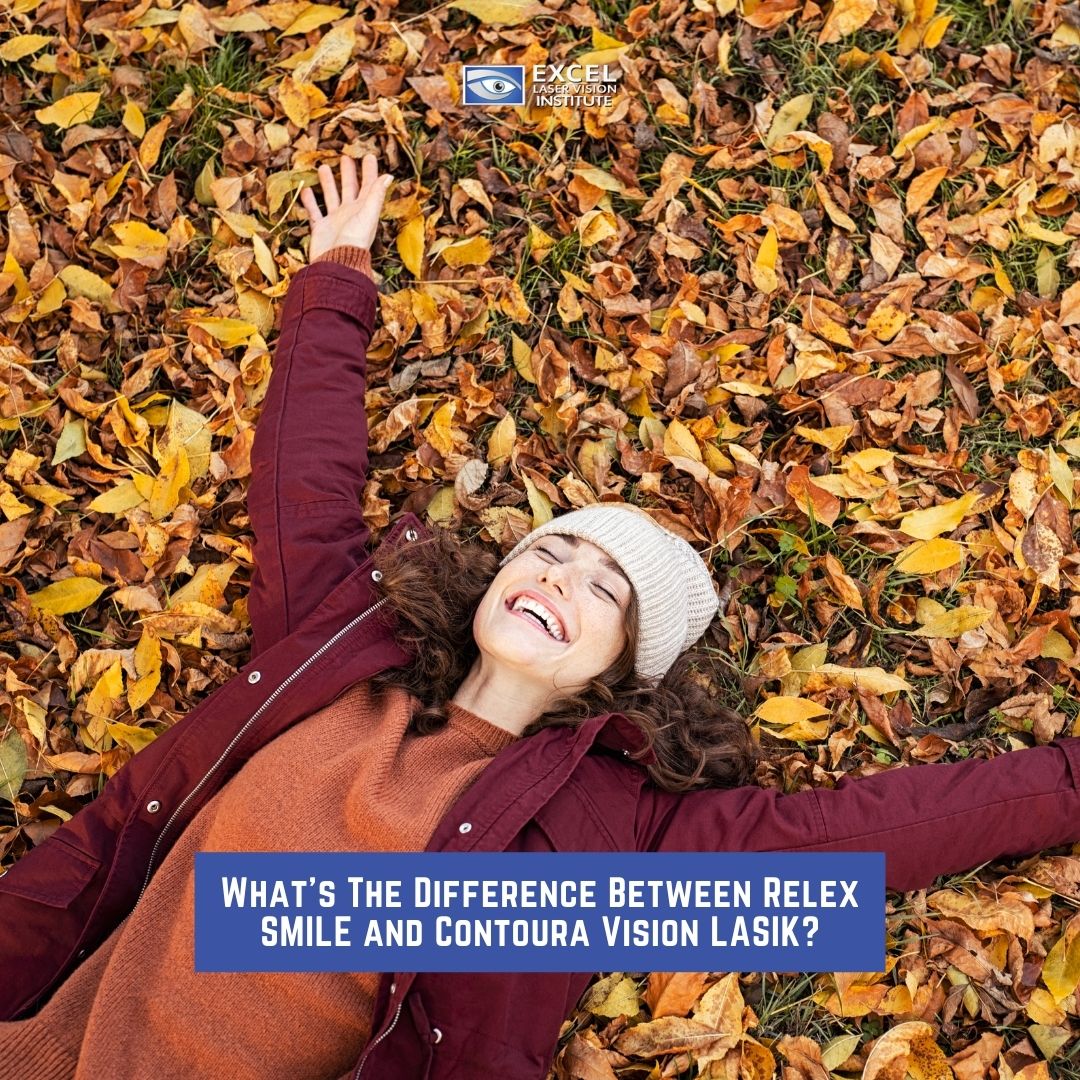
What’s The Difference Between Relex SMILE and Contoura Vision LASIK?
It’s safe to assume that everyone has heard of laser eye surgery. However, not many are familiar with specific vision correction techniques of LASIK. SMILE, Contoura, and Orange County LASIK are different versions of laser vision correction techniques. However, many are asking Doctor Moosa, the LASIK surgeon in Orange County, which one is best for them.
LASIK experts in Orange County will help you understand which technique is the most advantageous and we justify why you should go for laser vision to do away with contacts and eyeglasses.
What Are LASIK, Contoura, And Smile Eye Surgery?
When you consider laser eye surgery cost, in its most advanced form, when carried out at Excel Laser Vision Insitute uses two separate lasers, a Femtosecond laser creates a hinged flap that is lifted, and the base underneath the flap is rebuilt with an excimer laser. The flap creation makes next-day vision recovery a possibility.
The excimer laser that executes the reshaping element allows the laser eye surgery in Orange County to utilize the most advanced treatment algorithm, Contura Vision, which at the same time perfects the corneal shape whilst correcting the glasses prescription. This has made room for a new paradigm of visual quality results, representing the first time a person can achieve vision 2 lines better than the vision achievable with glasses.
SMILE LASIK in Orange County is when the eye surgeon only uses a Femtosecond laser to perform the entire correction instead of just the flap creation.
The femtosecond laser cuts a lenticle of tissue from the substance of the cornea that is then extracted through an access incision.
Both procedures correct Myopia. SMILE was initially conceived to reduce the outcome of dry eyes and potentially have a lower risk of an unstable cornea, also known as ectasia. As time has evolved and a more accurate evaluation of the effect of SMILE has emerged, it reveals these advantages have not been correct. Research has shown an occurrence of both dry eye and ectasia that is statistically similar to LASIK.
Since SMILE Does Not Have Advantages Over LASIK, What About Its Disadvantages?
First of all, SMILE is less accurate than Femtosecond LASIK with Contoura Vision.
About 98% of patients achieve vision equal to or even better than 20/20 vision after only one treatment at Excel Eye Vision Institute with Contura Vision LASIK.
The RELEX SMILE procedure only reaches 20/20 vision in about 60-85% of patients in recent studies. The inaccuracy of ReLex SMILE comes from the fact that the smallest amount of tissue taken out with a femtosecond laser is to 4 microns compared to the 0.25 microns attainable with an Excimer laser. This associates with at least sixteen times finer accuracy for an Excimer Laser.
The fact that SMILE lacks accuracy explains the increased number of requiring enhancements, at up to forty percent. Femtosecond LASIK provides next-day recovery with minimal discomfort, while eye enhancements performed with PRK or another surface-based laser can result in more discomfort for about two days and can take a patient six to eight weeks to recover.
Even when SMILE is effective, it usually takes three weeks, which differs from the next day recovery a patient can achieve with LASIK.
SMILE has a more extensive reduced treatment range. It can only effectively correct up to 0.5 diopters of astigmatism, while LASIK can correct up to 6 diopters. Also, It can’t correct hyperopia or mixed astigmatism. It can’t perform the sophisticated surface-perfecting ability that a Contura Vision procedure can accomplish, and as a result, it can’t provide this level of visual quality.
LASIK Laser Eye Surgery
Lasik is an abbreviation for Laser-Assisted in Situ Keratomileusis. It is a laser procedure that improves vision issues and gets rid of the need for corrective lenses.
Lasik surgery corrects the following refractive errors:
Nearsightedness (Myopia): It is an eye condition that involves the person having the ability to see nearby objects clearly but has problems when seeing distant objects clearly.
Farsightedness (Hyperopia): It is a condition that involves a person who can see faraway objects clearly but has issues seeing nearby objects.
Astigmatism: It is an eye condition that involves a person struggling to see both nearby and distant objects. It occurs because of uneven corneal curves or flatness.
Presbyopia: Also known as ‘aging eye, Presbyopia is an age-related condition. It occurs when the eye’s natural lens begins losing its ability to focus on nearby objects.
During a Lasik laser procedure, the LASIK eye surgeon in Orange County creates a corneal flap using a microkeratome instrument and pulls the flap back to get into the corneal tissue in the first stage. In the second stage, the surgeon reshapes the cornea utilizing an excimer laser.
SMILE Laser Eye Surgery
SMILE is an abbreviation for Small Incision Lenticule Extraction surgery. It is a laser eye surgery that is a contemporary advancement in laser vision correction. A laser eye surgeon in Orange County may recommend SMILE surgery to treat Myopia. Also, it can treat astigmatism that’s up to 5 Diopters. Also, it is a minimally invasive surgery that is bladeless. Typically it’s known as Refractive Lenticule Extraction/RELEX.
Why Should You Go For SMILE?
Less Invasive
Uncomplicated
Blade-free and Painless
Quicker Surgery & Recovery
Better Results
Flapless
Painless
Beyond Lasik
100% sterility
SMILE is an FDA-approved procedure that is usually carried out on patients between 18 to 40 years of age. It is a completed automated next-gen procedure that gets done quickly, guaranteeing long-lasting and fixed results. SMILE is a laser vision correction surgery that does not require the eye surgeon to create a corneal flap.
When an eye surgeon performs a SMILE procedure, a laser is used to make a small incision in the cornea. Once that’s done, the laser is used to take out a lenticule (a small piece of corneal tissue). This is the method that reshapes the cornea, and helps to correct vision. SMILE is only done after all required tests are completed to understand the condition of the eyes.
Even though the recovery from SMILE takes a bit longer than Femto Lasik or similar procedures, it provides the least possibility of dry eye as corneal nerves are well preserved. The chances of retreatment are next to nil as it is a keyhole surgery that contributes to the patient’s quick recovery.
Contoura Vision Eye Surgery
Contoura Vision Lasik is a topography-guided technology that is meant to enhance the effects of Lasik. Moreover, this procedure is also referred to as Robotic Lasik. During this procedure, a large flap of 22 mm is created on the top of the cornea. Then another separate laser system, an excimer, is used to remove the spectacle error.
This procedure utilizes an advanced computer algorithm to get details of the cornea over more than 22000 points on its surface. Personalized LASIK techniques such as Contoura uses the excimer laser only. Unlike SMILE, which works on the most advanced femtosecond laser platform.
If you want to learn more about the advantages and differences of SMILE, LASIK, and Contoura, contact Excel Laser Vision Institute today!

How Diabetes Affects the Eyesight of Patients Who Need LASIK
LASIK eye doctors in Los Angeles advise those who have diabetes to make sure they have their annual eye exam because it could save their sight. The Academy of Ophthalmology and the American Diabetes Association encourage everyone over 65 to have yearly eye exams.
Doctor Ferzaad Moosa, laser eye surgery doctor in Los Angeles tells us that Type 2 diabetes, also known as adult-onset diabetes, affects over 30.3 million Americans. This includes one-fourth of individuals over 65. Also, for those with diabetes, about a quarter don’t even know they have it and are blissfully ignorant of any threat of vision loss.
How Does Diabetes Deteriorate Eyesight?
The LASIK eye center doctor in Los Angeles lets us know that diabetes can harm the eyes, nerves, organs, and limbs because the body can’t effectively use insulin, a hormone secreted by the pancreas.
The pancreas and insulin are very important since they are responsible for the processing and shipping of blood glucose from your food to your body’s cells.
The LASIK eye expert in Los Angeles says that blood sugar serves as your primary energy source when everything is running smoothly. However, when you intake too many foods that spike your blood sugar or your pancreas starts to slow down, glucose just hangs out in your bloodstream instead of reaching your cells. When this process happens, it can spark vision loss and, eventually, blindness.
That is why it’s important to be diagnosed with diabetes as early as possible so you can get a better visual outcome. You always want to find changes to the eye before the damage is irreversible.
Diabetes affects the small blood vessels. For this reason, excess blood sugar destroys the body’s smallest blood vessels and restricts blood flow, which fasts the tissues’ capillary feed. As a result, there are leaking blood vessels, swelling, and other horrible complications.
Fluid leaks can change the shape and size of the eye’s lens, causing cataracts. Also, these leaks can destroy the retina, which is the back of the eye, where visual images are created.
Diabetes can generate hemorrhages (bleeding) and edema (excess fluid) in the retina that can seriously affect vision. The LASIK eye doctors in Los Angeles say that diabetic retinopathy is the fourth leading cause of blindness in the world.
When your eye bleeds or has retina detachment, it requires surgery, so don’t ask about LASIK eye surgery cost. Because if you don’t get eye surgery in time, severe vision may be permanent. Macular edema is swelling in the retina as it can happen at any stage of diabetes. Hungry capillaries also give rise to glaucoma, an eye disease that harms the optic nerve.
Eye Exams Are Important For Diabetics
Many diabetic patients do not experience visual symptoms. They could experience blurred or wavy vision or patches of lost sight without being aware that these are serious. If you are diabetic, it’s important to get your eye exams to find these conditions early before they cause permanent vision loss or blindness.
Don’t settle for just any visual exam. What you need is a complete comprehensive vision examination. Your eye doctor will dilate the eyes with drops so they can perform a thorough retinal exam.
Diabetic Retinopathy
Diabetic retinopathy is the most common diabetic eye disease. The condition happens after having long-term high blood sugar levels harm blood vessels in the retina, the light-sensing tissue that lines the back of the eye.
The first stage of diabetic retinopathy is called nonproliferative diabetic retinopathy. This happens when the blood vessels become blocked and start to cut off blood supply to the retina.
When the retina lacks sufficient blood supply, new, abnormal blood vessels start to proliferate (develop) in the retina. Unfortunately, these abnormal vessels can develop scar tissue and leak, which can cause a retinal detachment. Vision loss and various other eye diseases also can happen without early and proper treatment. This more advanced stage is referred to as proliferative diabetic retinopathy.
Although diabetic retinopathy only affects individuals with type 1 or type 2 diabetes, it is possible for someone who does not have diabetes to have retinopathy, another condition that arises from damage to the retina.
Macular Edema
Macular edema is directly linked to diabetic retinopathy and is a result of fluid from abnormal blood vessels that collect in the macula. The macula starts to swell and thicken as fluid gathers, which distorts eyesight. Important, detailed vision needed for driving and reading depends on the macula, making any related distortion a medical emergency.
Glaucoma
Glaucoma is defined by increased pressure within the eye. Leaking blood vessels caused by diabetic retinopathy can increase eye pressure and lead to neovascular glaucoma. As pressure carries on to build, the optic nerve may become damaged, and vision may be affected.
Retinal detachment
Diabetic retinopathy can cause the growth of scar tissue on retinal blood vessels. As more scar tissue develops, its weight can pull the retina away from its connective tissue. This development, known as retinal detachment, needs immediate medical attention, as it can lead to vision loss.
LASIK eye surgeons can help the median stages of diabetic eye disease with laser surgery and injections to the eyes to prevent retina’s swelling and abnormal blood vessels’ growth, known as neovascularization.
The American Academy of Ophthalmology reports that these types of injections can enhance vision in one-third of patients and stabilize the excess of capillaries in nine out of ten.
You can quickly check your blood sugars with an A1C blood test that measures the amount of sugar that sticks to hemoglobin molecules within the body’s cells.
If you have diabetes, make an appointment with Excel Laser Vision Institute in Los Angeles to discuss ways of treating and preventing eye conditions caused by diabetes.
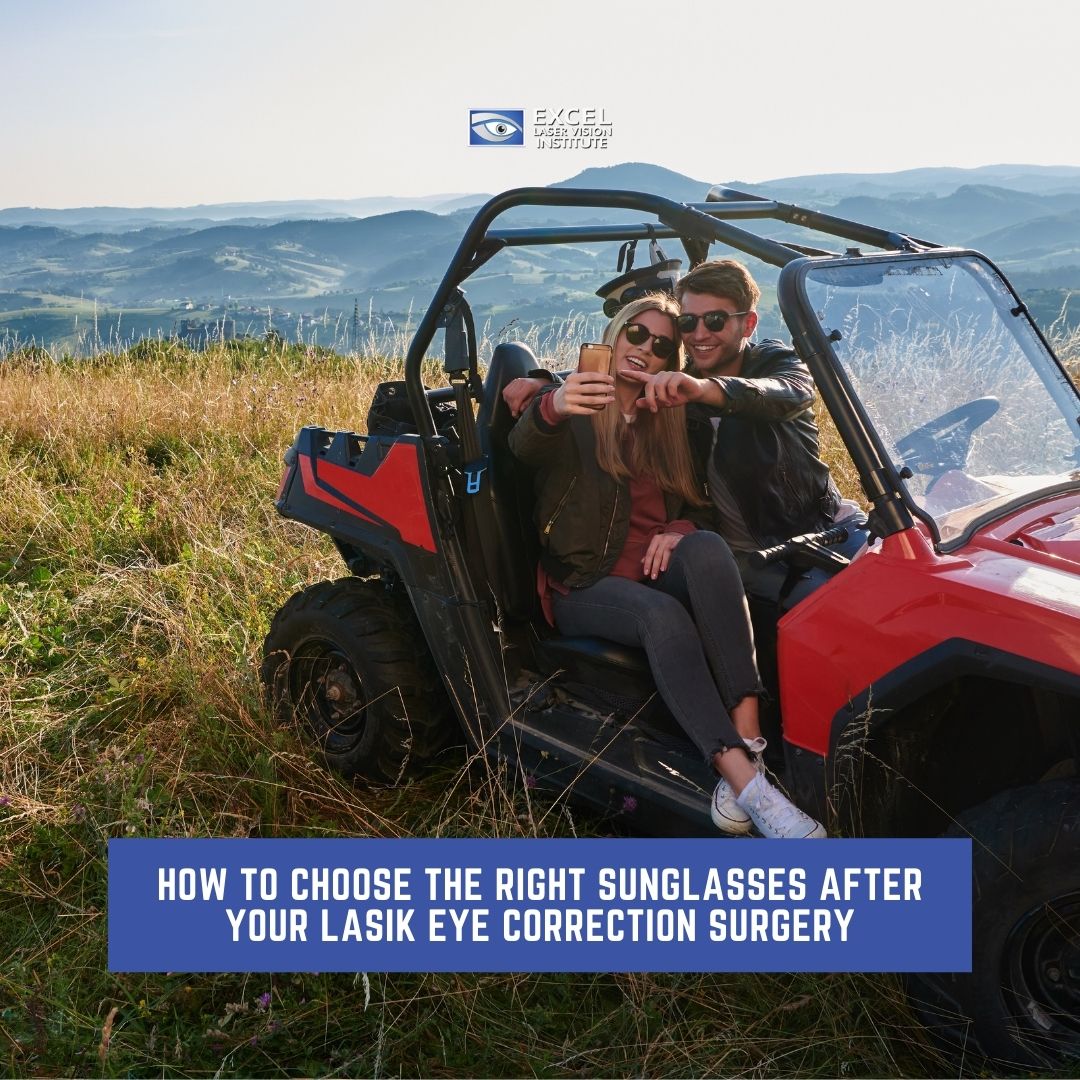
How To Choose the Right Sunglasses After Your LASIK Eye Correction Surgery
Imagine you have just had a LASIK, PRK, or even Contoura in Orange County done, and one of the supportive LASIK team members hand over to you a part of post-operative sunglasses and ask you to wear them. These sunglasses will not be the oversized plastic Cataract shades, but they aren’t going to be a fabulous sporty pair of Ray-Ban aviators either!
The first thing that the best laser eye surgery doctor in Orange County will tell you is to go shopping and get yourself a good pair of sunglasses to protect your eyes. However, the million-dollar question is, “What makes a pair of sunglasses the best pair to protect your eyes?” The American Academy of Ophthalmology has created the criteria below to give you a helping hand when choosing the best sunglasses to protect your eyes from the sun.
Which Sunglasses Should I Purchase?
If you think sunglasses are only a fashion accessory, think again. They are vital protection for your eyes against the harmful rays of the sun. You must understand what type of light you need to protect your eyes from and what type of light is not necessarily harmful. Here is some advice from a LASIK eye surgery doctor in Orange County on picking out the right pair of nonprescription sunglasses.
Sunglasses Should Block The Harmful Rays Of The Sun
Go for the sunglasses that block ninety-nine percent of ultraviolet (UV) rays. This is the most critical attribute of your sunglasses, and you should always choose sunglasses that offer this protection. Long-term exposure to ultraviolet (UV) radiation in sunlight is connected to eye disease, including cataracts. Some manufacturers’ labels claim UV absorption up to 400nm. This is the same as 100 percent UV absorption. Some glasses make additional claims for blocking infrared rays, but studies have not shown a close link between infrared rays and eye disease.
A more expensive pair of sunglasses doesn’t necessarily mean a better pair of sunglasses. Many types of affordable sunglasses provide 99 to 100 percent UV protection, so you don’t have to fork over tons of cash on a pair of sunglasses. Inspect the quality of the sunglasses. Besides UV protection, you should also check the optical quality of the lenses. The LASIK eye doctors in Orange County recommend you test the quality of sunglasses by looking at something with a rectangular pattern, such as a floor tile. Get a hold of the glasses at a comfortable distance and cover one eye. Move the glasses gradually from side to side, then up and down. If the lines remain straight, the lenses are good. If the lines zigzag, particularly in the center of the lens, try on another pair.
You want to look for impact-resistant lenses. All sunglasses must meet impact standards that the U.S. food and Drug Administration has set out for safety. No lens is really unbreakable, says the LASIK eye doctor in Orange County, but plastic lenses are not as likely to shatter when hit by a ball or stone. Polycarbonate plastics, utilized in many sports sunglasses, are incredibly durable but scratch easily. If you buy polycarbonate lenses, choose ones that have a scratch-resistant coating.
Make sure to use protective eyewear rather than sunglasses for hazardous activities. If you are going to be busy in outdoor activities such as water or snow skiing that put your eye in harm’s way for injury, don’t rely on your eyeglasses for protection. Protection eyewear is available with UV protection to safeguard your eyes from sunburn and glare.
Lens color tinting and polarization are personal options. There’s no medical reason to suggest one tint of the lens over another. The same goes for polarized lenses that work better at deflecting glare, but they’re not blocking any more harmful UV light than non-polarized lenses.
Undoubtedly you want a nice pair of polarized lenses after surgery. However, it is normal to experience some glare during your LASIK recovery, and polarized lenses are designed to reduce glare. You don’t have to opt for the most expensive pair of polarized lenses. You will know a pair of sunglasses are polarized since they will have a sticker or label indicating polarized.
When shopping for sunglasses, try to go for ones that provide full coverage. The sunglasses that your eye doctor will give you after surgery offer you lots of coverage, including peripheral vision, but you don’t need massive, bulky glasses for that. Try to find sunglasses with wraparound style lenses, which provide full coverage and often showcase a stylish design. It is best to find a pair that offers coverage for all angles of your vision.
When you find the right sunglasses, make sure you wear them, particularly in the summer when UV levels are about three times higher than in the winter. Also, be sure to wear them when taking part in winter sports, especially at high elevations.
Protecting your eyes as they heal after your PRK, LASIK, or Contoura surgery is essential. Unique, quality sunglasses will get the job done. Here at Excel Eye Vision Center, we can provide the sunglasses you need after your eye correction surgery. You are welcome to visit our clinic in Orange County and Los Angeles for a one-on-one consultation. Please call us at (866) 923-9235 if you want to set an appointment or ask questions about our available sunglasses suitable for post-PRK, LASIK, and Contoura cases.
At Excel Laser Vision Institute, we have a team of experienced staff and cutting-edge laser technology to perform Contoura, PRK, LASIK, SMILE, and other vision correction alternatives. Our Harvard-trained surgeon, Dr. Moosa, serves both our Orange County and Los Angeles offices. Once we assess your prescription and eye health, we can discuss which eye correction treatment is suitable for you, financing, and the next steps. Start your journey towards a clear vision that frees you from eyeglasses and contact lenses today.
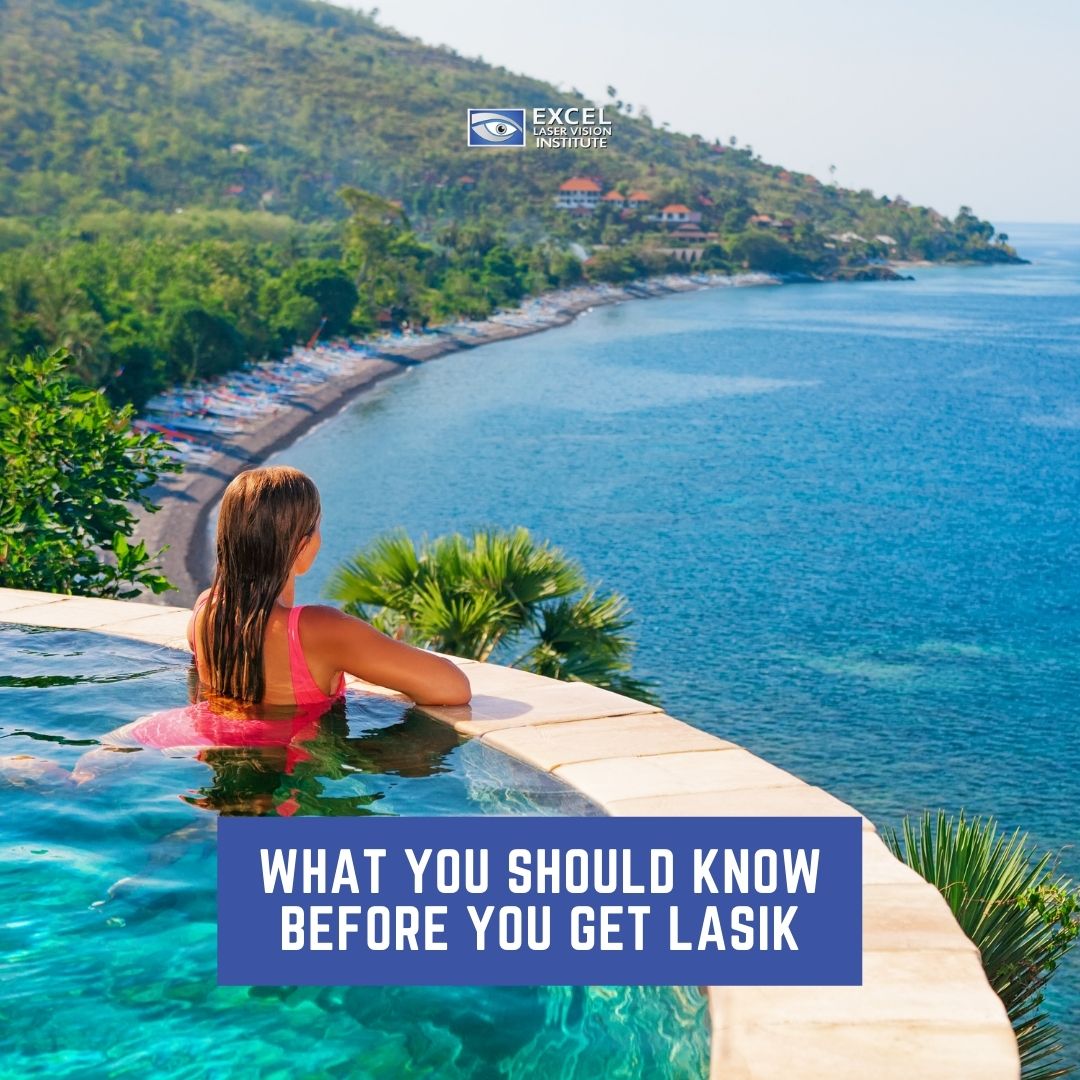
What You Should Know Before You Get LASIK
You may be looking into getting a LASIK procedure done to improve your vision and lessen or even eliminate your dependence on glasses or contact lenses. The best LASIK surgeons in Los Angeles have patients that are usually pleasantly surprised by two facts. The first is that LASIK is a procedure that is fast and pain-free. Secondly, they realize how clear, independent vision changes their lives for the best.
If you are shopping around for LASIK in Los Angeles, you should take your time to find out more about some of the surprising advantages of attaining a clear vision with LASIK.
Do Your Daily Activities Without Spectacles And Contact Lenses
Almost every LASIK surgeon in Los Angeles will tell you that you get a powerful sense of freedom when you don’t have to rely on eyewear to see correctly. When you eliminate the need for glasses or contact lenses to see clearly, your routine tasks become more accessible. For instance, if your child is crying in the middle of the night, you can get up to soothe them without having to worry about falling over furniture. Also, you can enjoy a game of basketball without having to worry about breaking your glasses. Maybe you want to be able to go to the movies without having to be concerned about seeing the screen.
Again, sticking with the subject of sports and leisure activities, many LASIK patients in Los Angeles usually decide to take up a new hobby after LASIK. Some individuals choose to take tennis lessons they have always wanted to do but are put on hold because of their dependence on eyewear. Perhaps, you finally join an adult hockey league. Or maybe begin photography or start working on model airplanes. Whatever your passion or what you want it to be, LASK provides you with the clear sight you need to do the activities that give you great enjoyment.
Traveling Becomes More Fun
Traveling with eyeglasses and contact lenses is a significant hassle. However, with Los Angeles LASIK, you no longer have to stress about packing a travel-sized contact lens solution or making sure to bring a spare pair for the road. You can save some space in your suitcase for other items, such as souvenirs.
No More Safety Concerns About Contacts
Almost everyone who wears contacts becomes sloppy about care and cleaning at some point. However, the ramifications of poor contact lens hygiene are very significant. For instance, not washing your hands before handling contacts or not storing them correctly can result in an eye infection.
Worthwhile Investment
If you want to know whether LASIK is worth the cost, just think about it like this. A LASIK procedure is a one-time cost, whereas contact lenses and replacement glasses frames and lenses are repeated costs. Also, you have to think that LASIK reduces the number of optometrist appointments you require to check your prescription regularly.
After weighing over the cost comparison, you will soon realize that LASIK pays for itself over time. On the whole, LASIK and Contoura in Los Angeles can save you money and let you put those dollars toward other things that upgrade your life.
What Does LASIK NOT Correct?
LASIK is a quick procedure that can treat refractive errors and reduce dependence on eyeglasses and contacts in a few minutes. When a qualified eye surgeon carries it out, it is incredibly safe and very successful. Due to its excellent track record, LASIK is one of the most sought-after elective surgeries performed globally and has helped millions of individuals see clearer. Nevertheless, it would help if you kept in mind that LASIK surgery is not an answer for every eye or vision issue, and it is not suitable for everyone.
Cataracts
Typically, cataracts develop in those who are aged 65 and over. It is when the eye’s lens, not the cornea, is diseased and causes blurriness, haziness, or otherwise distorted vision. LASIK surgery is not the ideal solution for cataracts. An eye doctor can only treat cataracts by removing the eye’s natural lens and replacing it with an artificial lens.
Keratoconus
Like refractive errors, keratoconus affects the cornea or transplant tissue covering the eye’s surface, and it causes blurry or distorted vision. Nevertheless, keratoconus cannot be cured with LASIK. As a matter of fact, LASIK can make the condition worse, which happens when the usually round cornea thins out and sticks out into a cone-like shape. Dr. Moosa at Excel Eye has several treatments targeting keratoconus, such as corneal crosslinking, special contact lenses, and corneal transplant.
Glaucoma
Glaucoma is an eye disease identified by an increase in pressure within the eye. As the disease progresses, it slowly damages the optic nerve, which transmits visual information from the eye to the brain. Over time, glaucoma can cause a permanent loss of vision. LASIK cannot treat glaucoma and is usually not an option for those with refractive errors and glaucoma.
Are You A Good Candidate For LASIK?
If you are considering LASIK to correct a refractive error, the best way to determine whether you are a good candidate is to schedule a consultation with Dr. Ferzaad Moosa. He will carry out an eye exam, take your medical history and talk to you about your treatment goals before recommending you for surgery.
To book your visit, don’t hesitate to get in touch with Excel Laser Vision Institute today.
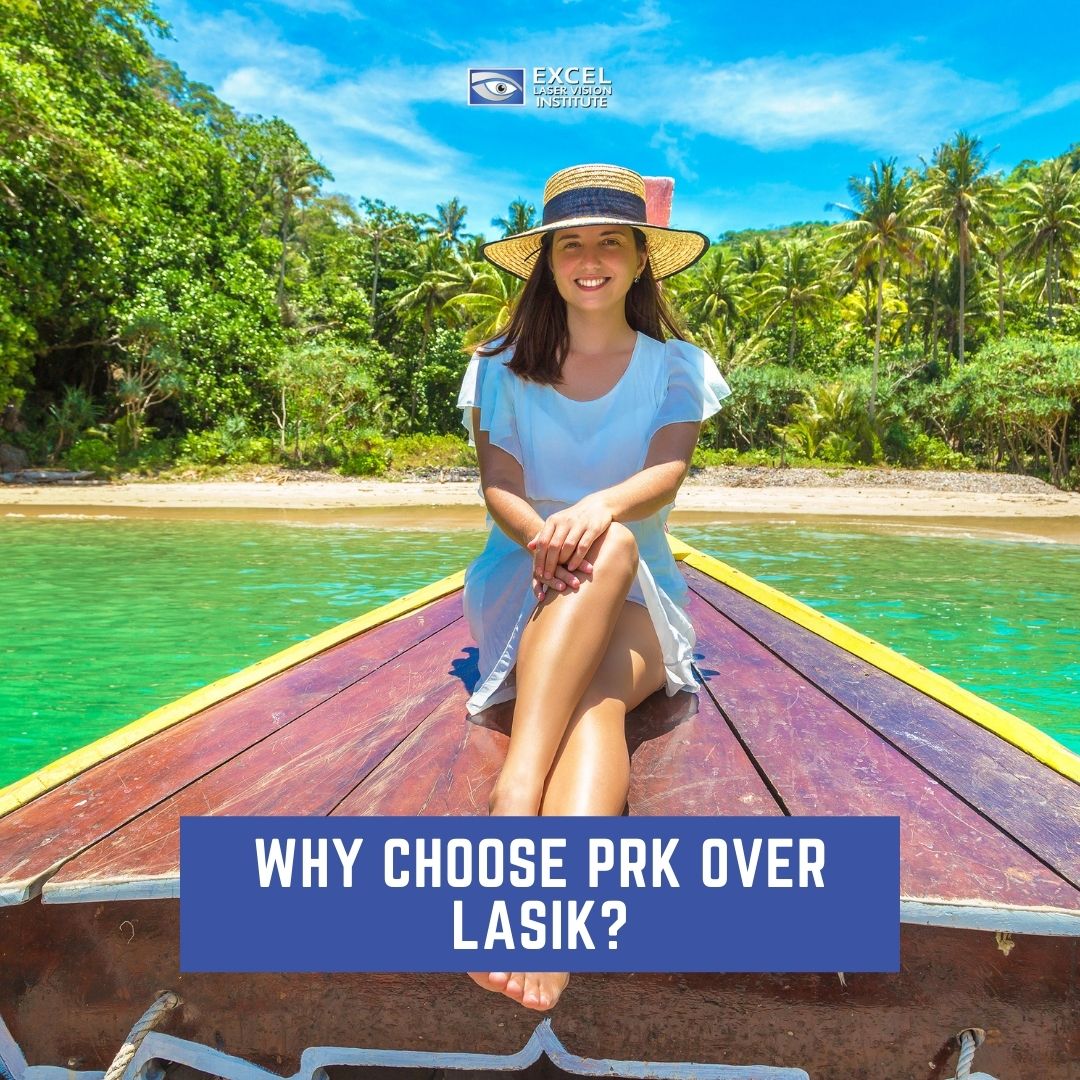
Why Choose PRK over LASIK?
Patients who visit Excel Laser Vision Institute, a LASIK clinic in Orange County, always say the same thing, “I’m sick and tired of having to wear glasses and contact lenses just to be able to see!” Most of these same patients are very aware of the very sought-after LASIK procedure. However, what about its close cousin, a PRK procedure?
Patients’ most frequent questions for Doctor Moosa, a premier LASIK surgeon in Orange County, are about the differences between LASIK and PRK. LASIK eye doctors in Orange County regularly perform both procedures with excellent results. They are very aware of what each patient really wants to find out is which approach would be perfect for them.
Why Would Your Eye Doctor Recommend PRK Rather Than LASIK?
When patients review LASIK eye surgery costs, they usually know someone who has had LASIK, but not PRK.
Typically, when patients have their LASIK or Contoura consultation in Orange County, they are waiting for their eye doctor to let them know whether or not they are a suitable candidate for LASIK. In some cases, a LASIK eye surgeon in Orange County drops a bombshell during the consultation process by letting the patient know that they would find PRK more beneficial than LASIK.
Various anatomical characteristics of a patient’s corneas may make them better candidates for PRK over LASIK. For instance, such as corneal thickness (or thinness), corneal curvature, and corneal scarring all may be why your eye doctor recommends PRK over LASIK.
How Are LASIK and PRK Similar?
Almost every eye care professional can agree that LASIK and PRK are both regarded as safe and effective laser vision correction procedures, provided that the patient is a suitable candidate.
Both procedures utilize an excimer laser to correct vision. Since they have the same method of attaining enhanced vision without glasses or contacts, the final visual outcome for patients usually is very similar.
In most cases, the excimer laser technology that your eye surgeon suggests for your procedure has the most significant effect on your chances of gaining 20/20 vision and the quality of that visual result than if the correction is carried out with the PRK procedure when compared to the LASIK procedure.
LASIK and PRK usually have the same visual results since they both deal with a patient’s blurry vision by changing the shape of the cornea using the cool energy of an excimer laser. The cornea is the structure located in front of the iris that has most of the eye’s focusing ability. To give you a better understanding, this is the part of the eye where a contact lens is placed.
If the cornea is the incorrect shape for the patient’s visual system, the patient has blurry vision. In a nutshell, the excimer laser vaporizes microscopic quantities of tissue in an accurate, tailor-made pattern to sculpt the cornea and alter its shape to enhance the patient’s vision.
You have to know the basics of what makes up the cornea to understand how LASIK and PRK work fully. To begin with, the cornea has five layers. The primary layer, known as the stroma, is the cornea’s middle layer, which includes 90 percent of the cornea’s thickness and it consists of collagen tissue fibers organized to make the cornea translucent and a high refractive index. These are two significant features of a focusing lens.
The cornea‘s outermost layer consists of a layer of translucent epithelium tissue (skin) to protect the cornea from the environment.
Similar to the skin tissue on other parts of the body, the epithelial layer of the cornea grows back if it is removed or damaged; however, the collagen tissue that forms the stroma does not.
In the LASIK and PRK procedures, the excimer laser sculpts the stromal layer of the cornea, giving a permanent change to the shape of the cornea. When the shape of the cornea is altered correctly, the light that enters the patient’s eye is focused more accurately for enhanced vision and without glasses or contact lenses.
How Are LASIK And PRK Different?
Although LASIK and PRK usually have the same end visual results, they are performed differently, which allows each procedure its own series of pros and cons when compared to one another.
In some instances, a patient may only be suitable for LASIK or only a candidate for PRK. In other cases, the patient can be a candidate for both procedures and may opt for the procedure they would prefer the most.
The disparity between the procedures is how the eye surgeon accesses the cornea to alter its shape with the excimer laser. The epithelium (skin) tissue that covers the cornea must be removed or temporarily taken out of the way before the excimer laser’s energy is applied to the cornea so that the excimer laser sculpts the layer of the cornea that does not reappear. The way the laser and eye surgeon gets rid of the skin tissue in the first step is called PRK, and the method that briefly pushes it out of the way is called LASIK.
Who Are PRK Candidates?
If a patient has thin corneas, they are not suitable LASIK candidates. However, they can opt for PRK. Individuals with large pupils may find PRK a better option, which is also the case for those with irregular astigmatism. Moreover, if you suffer from dry eyes and want to improve your vision, your eye surgeon will recommend PRK.
Athletes in contact sports may go for PRK. Also, patients in physically demanding jobs may choose PRK since the nature of such sports and work intensifies the risk of flap complications.
As with either procedure, candidates must be at least 18 years of age and have a stable vision prescription for at least one year.
If you want more information about PRK and whether you are a candidate for the procedure, contact Excel Laser Vision Institute and schedule a consultation with Dr. Ferzaad Moosa. He and his highly experienced team will explain the procedure in detail and answer any questions you may have.
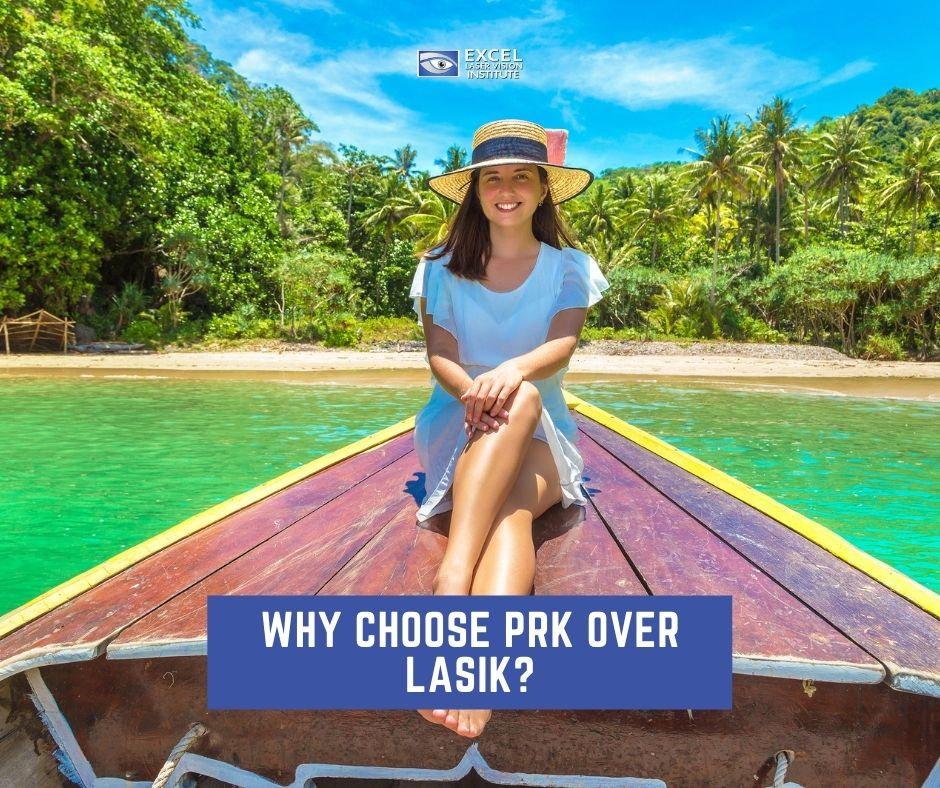
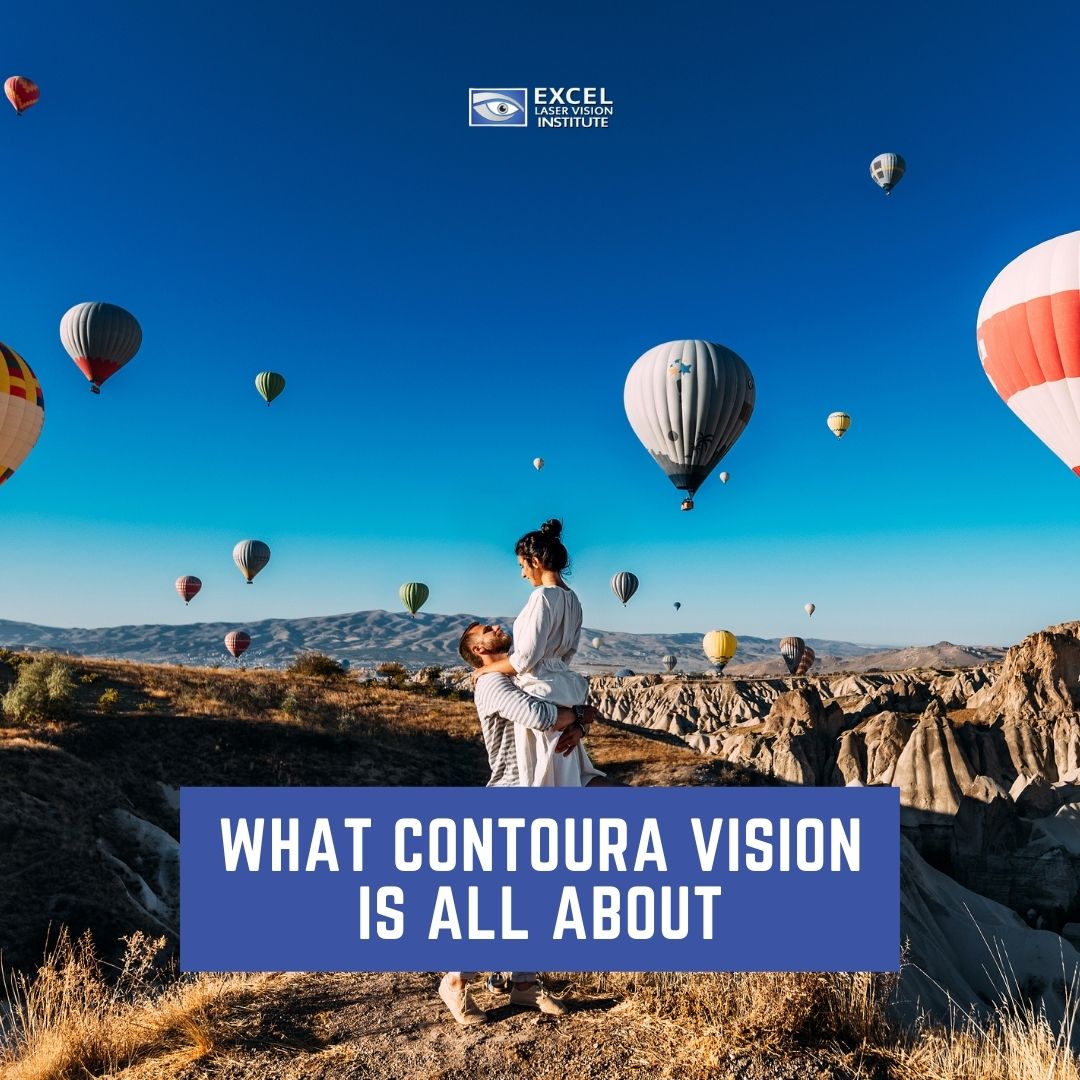
What Contoura Vision is All About
Medicine and science are constantly evolving, and because of this, Orange County has seen numerous advancements in LASIK eye surgery techniques. These breakthroughs have been why so many people can now enjoy enhanced vision without having to wear corrective eyewear to see clearly.
Contoura Vision Eye Surgery, a type of laser eye surgery in Orange County, is another advancement in LASIK Surgery assisting your eye surgeons in creating a customized LASIK procedure to enhance the quality of your eyesight. Contoura Vision is the latest FDA-approved LASIK procedure that optimally lessens the corneal irregularities of your eyes.
According to clinical studies, Contoura Vision Eye Surgery has helped 30% of the patients obtain better than 6/6 vision (an ability to see at 6 meters what an average person can see at 6 meters). Therefore, helping them see better without eyeglasses or contact lenses than they did with them.
What Makes Contoura Vision So Special?
The most compelling feature of Contoura Vision is that it places a technological head start on the treatment compared to traditional LASIK surgery. Although the earlier laser vision correction techniques have successfully provided LASIK patients in Orange County with fantastic accuracy and precision while reshaping the cornea and focusing on visual refractive errors, Contoura Vision performed by LASIK surgeons in Orange County takes the treatment a step further.
How Is It So Unique?
When you consider laser eye surgery cost and the fact that LASIK just treats the eyeglass prescription, Contoura, on the other hand, uses unparalleled diagnostic capabilities such as a three-step correction technique utilizing a Femto Laser, Excimer Laser, and a Topolyser to locate and record the tiniest imperfections in the curvature of cornea thereby giving an aspheric correction of spectacle power while also correcting a person’s corneal irregularities and working on the visual axis.
The eye has two types of axis. The Pupillary Axis, which passes through the center, and Visual Axis, which goes through the line of sight, each have a difference of 5 degrees. While other laser procedures treat the Pupillary Axis, Contoura Vision is concentrated on the Visual Axis. Doctor Moosa, a LASIK surgeon in Orange County, takes down the measurements combined with eyeglass prescriptions to give the patient’s eyes a better focusing surface, thereby getting a much exceptional visual outcome. Besides that, even many side effects of various other LASIK procedures such as light sensitivity, problems with night driving, difficulty in reading, glare, starbursts, halos usually lessen with Contoura Vision.
Why Opt For Contoura Vision Eye Surgery?
Improved Quality Of Vision – Contoura Vision can correct even the most minor distortion in the cornea, resulting in enhanced quality of vision, with lesser side effects than a post LASIK procedure, which are remarkedly reduced or absent in a Contoura Vision.
Enhanced Quantity Of Vision – Contoura Vision allows the patient to have the possibility of improved reading capacity, which they could not achieve with corrective eyewear.
Enhanced Surgery Experience – Contoura Vision has the highest standards for safety and providing a painless experience. The surgery is performed with NO STITCHES, NO BLADE, NO BANDAGE, NO INJECTIONS, AND NO HOSPITALISATION. You can walk into a LASIK Orange County procedure without any concerns and leave with perfect and sharper vision. The treatment is efficient and effective to guarantee better vision.
Improved Post Surgery Experience – Many patients may feel discomfort or experience issues after undergoing a traditional LASIK surgery. Nevertheless, with Contoura Vision, you are entitled to a better post-surgery experience.
Enhanced Trust – Similar to the FDA’s proven survey results, 98% of patients who have undergone Contoura Vision Eye Surgery were very satisfied pleased with the procedure and said they would choose the procedure again.
How Is A Contoura Vision Procedure Performed?
Step 1 – The procedure starts with a detailed evaluation of the patient’s eye. In order to guarantee quality, the evaluation is carried out with a state-of-the-art diagnostic system. The assessment also includes a complete preoperative screening to assess the patient’s eligibility and safety of the LASIK procedure. If the patient has any retinal lesions (such as thinning/ hole/ tear), then they’re first treated with a barrage laser, and after one to four weeks, Contoura Vision LASIK is performed.
Step 2 – Depending on the outcome of the evaluation, your eye surgeon will create a customized treatment plan derived from the data provided by the diagnostic system mapping the corneal irregularities using 22,000 unique data points.
Step 3 – Based on the initial planning, Contoura Vision Eye Surgery is carried out by capturing the topographic images of the patient using a topolyser. Contoura Vision Femto-LASIK is executed on WaveLight Refractive Suite, which is believed to be the fastest laser ever. The eye surgeon creates a thin corneal flap using the Bladeless Femtosecond technology on the FS 200 laser. A topo guided laser ablation for refractive correction is performed on the EX500 Excimer laser.
Step 4 – When the procedure has been completed, within 30 minutes, you can leave the clinic. The recovery is short and helps the patient to resume their regular routine in a day or two. Typically, the patient is called in for an assessment at regular intervals to ensure everything is healing correctly. A customized post-surgery plan is given to the patient, including eye drops to prevent infection and assist in the healing process.
If you are considering Contoura Vision surgery to enhance your eyesight, contact Excel Laser Vision Institute at (888) 957-3255. Our team of staff is experienced and highly skilled. Our leading eye surgeon, Dr. Moosa, a well-established eye surgeon in Los Angeles, has years of experience in Contoura Vision procedures. He received his training at Harvard University and has vast experience working with various prescription levels. Dr. Moosa has helped many professionals achieve their vision goals, from athletes to models to military personnel. Visit our website to learn more: https://www.exceleye.com/.

Why Should You Opt for Contoura Vision?
LASIK patients in Los Angeles are curious to find out more about Contoura Vision eye surgery. In a nutshell, it’s an advanced version of LASIK surgery that offers better results to patients who want to stop wearing their eyeglasses. Also, it’s a type of corrective eye surgery in which people who aren’t eligible to undergo LASIK surgery because of abnormalities in the cornea can also get excellent results with this advanced method.
What Is Contoura Vision?
Contoura Vision is also called topography-guided LASIK surgery, offered in one of our clinics in Los Angeles. It’s the most recent advancement in the elimination of eyewear by laser vision correction. Since LASIK & SMILE procedures only correct the power of the eyeglass, a Contoura procedure corrects the corneal irregularities and works on Visual Axis. This means a Contoura treatment provides sharper visual results, which LASIK and SMILE procedures are not possible.
Is Contoura Vision Eye Surgery A Better Option Than LASIK?
When considering LASIK eye surgery cost, both Los Angeles LASIK surgery and Contoura procedures are carried out to enhance nearsightedness, farsightedness, and astigmatism. However, there are fundamental disparities between these two types of technology, results, and scopes.
- Even though LASIK in Los Angeles phases out the need for eyeglasses or contact lenses, Contoura vision provides more visual acuity and improved refractive results in some instances. Contoura is a computer-aided topographic mapping method that pinpoints microscopic contours on the transparent front of the eye, such as the cornea.
- Contoura heals the anomalies of the cornea’s curvature and the optics. The treatment is based on the visual axis of the eye. Considering that, other LASIK procedures are focused on the eyeball.
- The contours of the cornea are produced by advanced computer analysis and are programmed into a specially designed laser. During this process, 22,000 points of the cornea are mapped. Once this is done, your eye doctor makes an individualized treatment plan for you. Since everyone’s eyes are different, each treatment plan is customized.
- This topography-guided LASIK surgery improves the abnormalities of the cornea. The quality of your vision is repaired so that the light can get into the eye readily and evenly. That’s why the vision is clear and sharp. This method is an advanced version of the standard corrections. After Contoura Vision, many patients can see more clearly even without eyeglasses than their previous version of vision correction. Also, there are surprisingly fewer problems with glare around the lights. Even studies have recorded a decrease in complaints by the patients about driving at night.
- Contoura vision correction provides impressive results. Among the patients who have received this treatment, 65% (rough estimate) have improvements better than 6/6. Moreover, there’s quicker healing and less tissue damage. In instances where people have had LASIK surgery earlier but are not satisfied with the results, also go for Contoura treatment.
This topography-guided LASIK surgery is the most breakthrough, safest, and latest eyewear removal and vision correction method. So definitely, Contoura Vision treatment is better than LASIK Surgery.
Wavelight Contoura In Eyes That Have Undergone LASIK Or In Eyes That Have Irregular Corneas
Wavelight Contoura can cure eyes that have already undergone LASIK and have irregularities in the cornea that have lowered the quality of vision and side effects.
These side effects consist of glare, halos, ghosting of images, and blurred vision. Patients who have these side effects may be candidates for a topography-guided laser vision enhancement to get rid of the irregularities in the cornea, which could be responsible for the symptoms. These would be considered off-label treatments, but they have been carried out globally, and clinical data have shown better outcomes in select patients. Plus, patients who have keratoconus or post LASIK ectasia may also be candidates for Contoura Vision treatment.
Brief From The FDA Trials With Wavelight Contoura
During a clinical trial that resulted in the FDA approval of Contoura Vision:
98% of people who had the procedure reported they would do it again.
30% of eyes had better vision without glasses or contacts after the procedure than when wearing glasses or contacts before the treatment.
The procedure lessened complaints of glare and reduced sensitivity to light, difficulty reading, and distress while driving at night compared with what patients were previously experiencing before surgery.
Although 20/20 is believed to be normal vision, and 92% of patients had 20/20 or better vision after their Contoura Vision procedure, 65% of patients obtained 20/16 vision, and 34% attained 20/12.5 (Eagles are considered to have 20/5 vision; hawks as good as 20/2.)
In about every patient, the result outperformed glasses and contact lenses for many patients and moved some patients nearer to “eagle eye” vision than ever thought possible.
Who Is Eligible For Contoura Vision Treatment?
Contoura method is a technique that has the green light from the US FDA. It provides exceptional results compared to LASIK and SMILE. That’s why it’s recommended by ophthalmologists and is swiftly achieving lots of attention with patients. Here are the eligibility criteria for patients to undergo this process.
The patient must be above 18 years
The patient should have a consistent prescription for eyewear
The patient must obtain <3D cyl. Power
The patient’s cornea should not be thin
The patient’s eye power should not be spherical >8D
The patient should not be experiencing any significant corneal pathology.
If you want to live a life free from eyeglasses and contact lenses, then talk to an eye care professional at Excel Laser Vision Institute, a reputable LASIK clinic in Los Angeles. Contoura Vision eye surgery can treat many refractive errors and ensure that your vision is in top shape. Contoura professionals will conduct a thorough evaluation of your eye health and condition before determining if you are eligible for Contoura Vision eye surgery or a similar procedure.
Call Excel Laser Vision Institute at (888) 957-3255. Our team of staff is highly trained and experienced in all LASIK eye procedures. Also, we have Dr. Moosa, a well-esteemed LASIK/Contoura surgeon that has a Harvard education and vast experience working with various prescription levels. Dr. Moosa has helped many individuals attain their vision goals. Visit our website https://www.exceleye.com/ or any of our clinics to learn more.

What Is Contoura™ Vision And How Can It Benefit You?
Individuals seeking permanent eye correction solutions are asking for more information about Contoura Vision. Contoura is the most revolutionary customization technology available for laser eye surgery if you don’t know already. The laser eye surgery doctors in Los Angeles perform this type of procedure and explain more about it below.
WHAT IS THE CONTOURA® VISION TREATMENT?
When you consider the LASIK eye surgery cost, you can’t go wrong with a Contoura procedure. Doctor Moosa, the LASIK Los Angeles surgeon of Excel Laser Vision Institute, enlightens us that Contoura Vision is a topography-guided vision correction treatment. It is a visual treatment that’s customized for the patient. Also, it’s the only treatment to accurately map 22,000 elevation points of the cornea to produce a customized treatment to an individual’s vision.
When there are irregular elevation points on the eye, it can disrupt the light entering the eye and block you from attaining optimal Vision. These maps let Contoura Vision produce a customized vision correction treatment that’s one-of-a-kind to your eye. The topography test transmits data straight to the excimer laser for the Contoura Vision treatment. The topography of your eye is as unique as your fingerprint.
How Is Contoura Vision Different From Other Vision Correction Treatments?
There are so many vision correction treatments available that only treat your eyeglasses prescription. However, Contoura in Los Angeles has the technology to allow the Vision to be personalized, based on individualized mapping of the contours, such as a fingerprint, of your eye. The outcomes of the FDA Clinical Trials have revealed that this personalized treatment gives excellent visual results, with 93% of the patients receiving 20/20 vision or better.
Contoura™ Vision, which has been used safely and effectively in the United States, Canada, and Europe for over ten years, is a unique topography-guided LASIK procedure because of the way it maps the eye to guide treatment. It utilizes a topography instrument called the Vario Topolyzer to measure every submicroscopic peak and valley on the cornea to a very accurate degree.
Although wavefront-guided LASIK can generate good outcomes by measuring about 200 points of curvature on the cornea, Contoura Vision measures 22,000 points. That information lets a computer create an individualized treatment profile, which is then programmed into an ultra-modern laser that immediately applies the treatment to the cornea.
The laser regularises the shape of the cornea, so all of the light rays go through it reach the retina at the back of the eye consistently, creating clear, crisp Vision. Contoura™ Vision is truly personalized. The topography measurements are so precise that it would be inconceivable for any two treatments to be the same.
Another distinction between wavefront-guided and topography-guided LASIK is that wavefront measurements consist of all parts of the eye along the visual pathway, and topography measurements include only the cornea. This is crucial since the cornea is where most of the imperfections can make Vision less than perfect. While the lens of the eye can also bring about poor Vision, it alters over time, which could counteract the changes made to the cornea by LASIK.
ContouraTM Vision: Topography-Guided Laser Vision Correction can enhance the surface of the eye’s cornea in such a manner that it actually improves the quality of Vision better than has ever been achievable before.
During clinical studies, ContouraTMVision – Topography-Guided Laser Vision Correction helped 90% of patients see as well or even better without glasses than they did with glasses. It can work for patients in several ways, helping them attain a better quality of Vision and lowering the potential for night glare.
How Do You Become A Candidate For Contoura Vision?
The LASIK eye specialist in Los Angeles uses the Wavelight® Suite, which provides various vision correction treatments to let the eye surgeon and surgical team create a personalized treatment plan based on many measurements of your eyes and Vision. The Wavelight® diagnostics suite takes numerous measurements, including topography maps and aberrometry maps of your eye. These maps, together with your Vision and prescription details, are used to find out which treatment option will provide you with optimal visual results. If this analysis reveals that a Contoura procedure will give the best visual outcomes, your eye surgeon will recommend Contoura Vision. However, your tailor-made treatment plan may recommend a different method for some eye shapes and vision types.
The Contoura method is a technique that the US FDA approved. It delivers higher quality results compared to Lasik and SMILE. Take a look at some of the eligibility criteria for patients who wish to undergo this procedure.
The patient must be above 18 years
The patient has a steady prescription for eyewear
The patient has <3D cyl. Power
The patient’s cornea is not thin
The patient’s eye power isn’t spherical >8D
The patient isn’t suffering from any significant corneal pathology
If you are considering Contoura Vision surgery to improve your eyesight, contact Excel Laser Vision Institute at (888) 957-3255. Our team is experienced as well as highly trained. Our leading eye surgeon, Dr. Moosa, a well-established LASIK surgeon in Los Angeles, has years of experience in Contoura Vision procedures. He was formerly trained at Harvard University and has a wealth of experience working with various prescription levels. Dr. Moosa has helped many professionals achieve their vision goals, from athletes to models to military personnel. Visit our website to learn more: https://www.exceleye.com/.
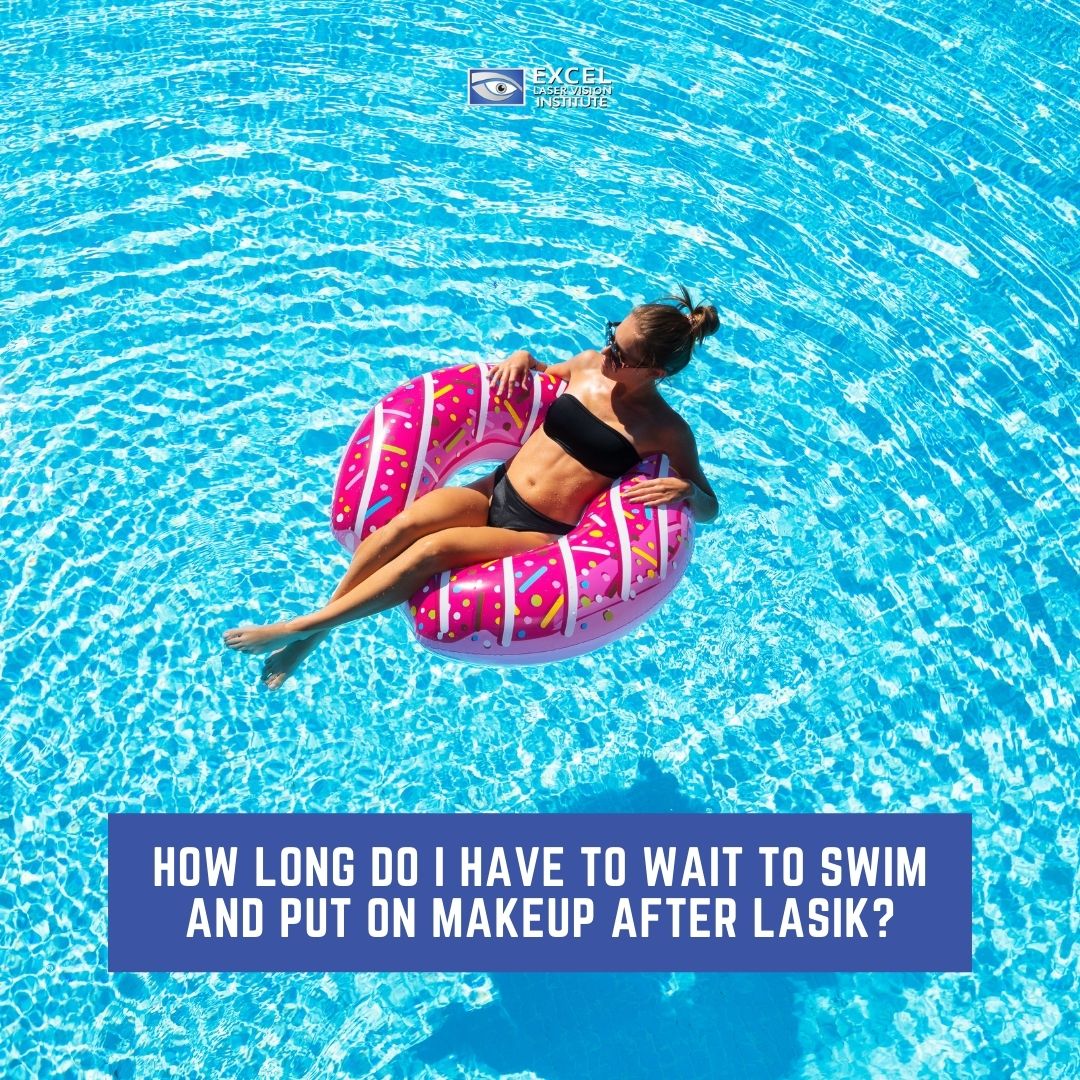
How Long Do I Have To Wait To Swim and Put On Makeup After LASIK?
The number one question that patients usually ask before their LASIK procedure in Orange County is how long it will take to get back to their normal routines and activities. Even though LASIK is glorified as a procedure for its fast recovery process, there are some things you have to steer clear of for a while after the surgery. Here, one of the best laser eye surgery doctors in Orange County tells us when we can take a dip and doll ourselves up again after a LASIK procedure.
Swimming With Eyewear
Imagine it’s summer, and the mercury is rising. There is nothing better than jumping into your pool. However, before you take that refreshing plunge, you have to remove your glasses or contacts. However, taking off such eyewear can leave you visually impaired. So, what will you do? How will you see?
Heading out for water activities while wearing contacts or glasses isn’t that simple. Fortunately, LASIK eye surgery in Orange County can help you enjoy your summertime fun without having to deal with or worry about losing a contact lens or damaging your eyewear.
However, hold on a sec. If you are seriously considering LASIK, the most common question patients ask about is the recovery process. For instance, how long do I have to wait after surgery to enjoy water activities? Can I take showers? Take a look below at what you should know before jumping into the water after LASIK.
Can I Shower After LASIK Surgery?
After your procedure, LASIK eye doctors tell patients to take a nap to let their eyes rest. When you wake up from your siesta, take a shower as you usually would is absolutely fine. Nevertheless, don’t put soap, water, or shampoo into your eyes. While you wash your face, be extra careful around your eyes too. You should also be extra gentle when carrying out your skincare routine.
When Can I Swim After A LASIK Procedure?
Is summer on the horizon, or are you planning a getaway to a hot, tropical country, and you aren’t too sure if you should get a LASIK procedure done before? If you are thinking about treading water after LASIK, you’ll have to plan your trip meticulously. Following a LASIK procedure, allow a week to pass before jumping back into a pool or any body of water for that matter. You can get back into your hot tub around three to five days after your procedure. You should think about scheduling LASIK after your vacation if your vision doesn’t need immediate correction. This will help you to avoid hurrying into any activities that could be detrimental to your recovery process.
Water in any form has chlorine and or bacteria in freshwater or includes salt from ocean water, can irritate or cause an infection in your eyes. So, if you are a thalassophile, you should wear swimming goggles to give your eyes additional protection for a few weeks after your LASIK procedure.
Why Should You Avoid Makeup Right After LASIK?
To put it simply. When you apply makeup after a LASIK procedure, you boost your chances of an infection. Studies show that most open, in-use makeup products have bacteria that can cause infection. While your eyes are healing after LASIK, you will want to be very careful not to expose your eyes to anything that could hurt them. Even though you can be as careful as you possibly could while putting on your makeup, a simple mistake can ruin the progress you made during your LASIK surgery. It is very understandable that not wearing makeup when you are used to wearing it all the time can be a very hard thing to do.
Fortunately, you won’t need to avoid all makeup after LASIK. So long as you don’t get anything in your eye, there are loads of makeup options that are safe for use. Here are some examples of types of makeup that are suitable to use.
Blush
Foundation
Lipstick
Bronzer
How Long Should You Wait To Wear Makeup After LASIK?
If you have had LASIK, you should stay away from wearing eye makeup for at least a week. However, this length of time can differ on a case-by-case basis. Some individuals will be ready in a few days, while others may need more time. If you are aware of an occasion that’s around the corner where you want to wear eye makeup, you will probably want to put your LASIK procedure on the back burner until after.
If you are considering LASIK surgery to improve your eyesight, contact Excel Laser Vision Institute at (888) 957-3255. Our team of staff is experienced. And highly trained. Our leading eye surgeon, Dr. Moosa, a well-established LASIK surgeon in Los Angeles, has years of experience in LASIK procedures. He was formerly trained at Harvard University and has a wealth of experience working with various prescription levels. Dr. Moosa has helped many professionals achieve their vision goals, from athletes to models to military personnel. Visit our website to learn more: https://www.exceleye.com/.




